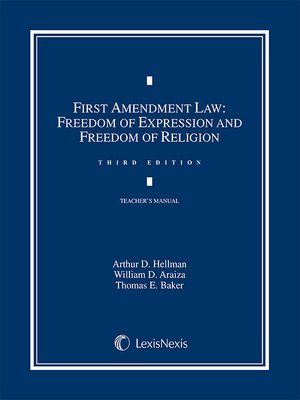First Amendment Law
ebook ∣ Freedom of Expression & Freedom of Religion, Teacher's Manual · First Amendment Law
By Arthur D. Hellman

Sign up to save your library
With an OverDrive account, you can save your favorite libraries for at-a-glance information about availability. Find out more about OverDrive accounts.
Find this title in Libby, the library reading app by OverDrive.



Search for a digital library with this title
Title found at these libraries:
| Loading... |
TEACHER'S MANUAL for First Amendment Law: Freedom of Expression & Freedom of Religion, Third Edition This new casebook rests on a straightforward premise: The First Amendment can be viewed as history, as policy, and as theory, but from a lawyer's perspective, it is above all law--albeit a special kind of law. One thing that is special is that the governing texts have receded into the background. The law is the cases, and the cases are the law. Close analysis of precedent is therefore the principal tool of argumentation and adjudication. The purpose of this casebook is to help students to learn the law in a way that will enable them to use it in the service of clients. Several features of the book promote this goal. The cases are edited with a relatively light hand. Notes and questions provide guidance in working with the opinions. The structure of the book--closely tracking the structure that the Supreme Court has imposed--helps to reinforce learning. Non-case materials (including drafts and memoranda from the Justices' private papers) are used to shed light on what was established by existing precedents and how a new decision changes (or does not change) the law. By giving primacy to the Justices' won words and the Court's own doctrinal structure, the book offers maximum flexibility for teachers to place their own imprint on the course. The accompanying Teacher's Manual offers extensive guidance for taking advantage of the breadth--and depth--of coverage offered by the casebook. The authors have included three different sample syllabi. The running commentary fully analyzes the cases and suggests possible directions for class discussion. The authors also provide answers to the questions that appear in the notes and identify the origins and sources for the Problems.






